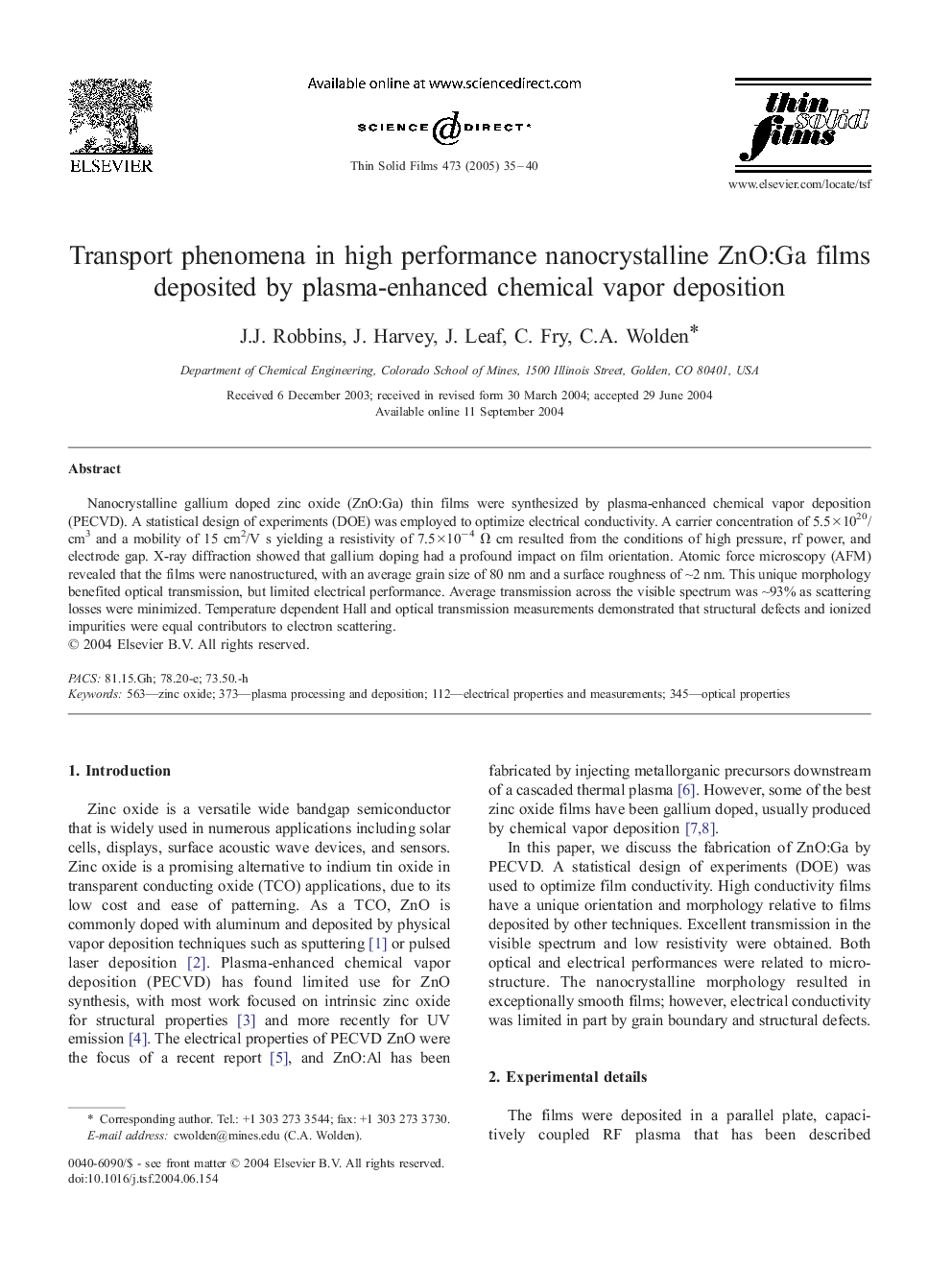| Article ID | Journal | Published Year | Pages | File Type |
|---|---|---|---|---|
| 10671008 | Thin Solid Films | 2005 | 6 Pages |
Abstract
Nanocrystalline gallium doped zinc oxide (ZnO:Ga) thin films were synthesized by plasma-enhanced chemical vapor deposition (PECVD). A statistical design of experiments (DOE) was employed to optimize electrical conductivity. A carrier concentration of 5.5Ã1020/cm3 and a mobility of 15 cm2/V s yielding a resistivity of 7.5Ã10â4 Ω cm resulted from the conditions of high pressure, rf power, and electrode gap. X-ray diffraction showed that gallium doping had a profound impact on film orientation. Atomic force microscopy (AFM) revealed that the films were nanostructured, with an average grain size of 80 nm and a surface roughness of â¼2 nm. This unique morphology benefited optical transmission, but limited electrical performance. Average transmission across the visible spectrum was â¼93% as scattering losses were minimized. Temperature dependent Hall and optical transmission measurements demonstrated that structural defects and ionized impurities were equal contributors to electron scattering.
Related Topics
Physical Sciences and Engineering
Materials Science
Nanotechnology
Authors
J.J. Robbins, J. Harvey, J. Leaf, C. Fry, C.A. Wolden,
